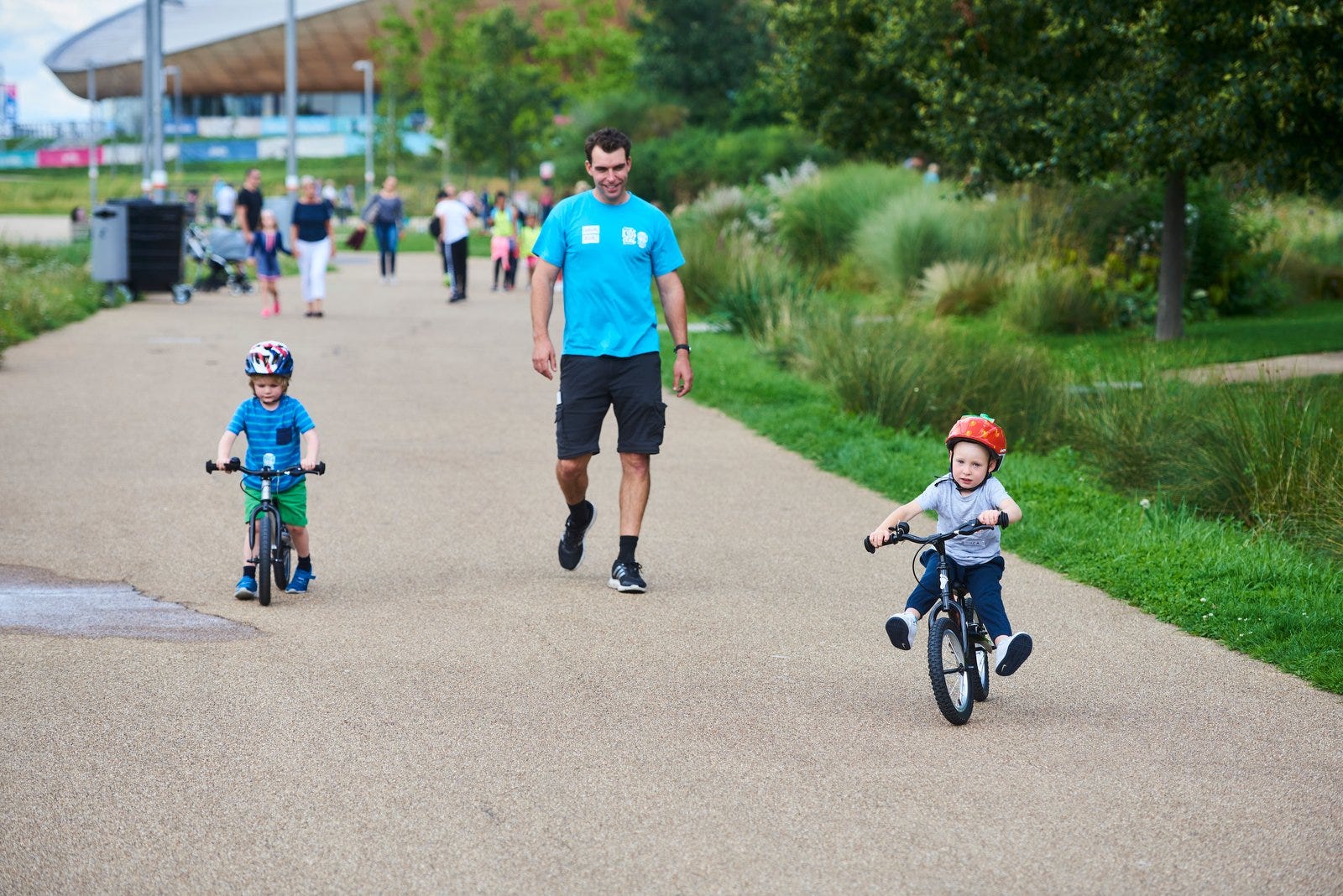Need Help? Call us on 0208 385 3440
Teaching your child to ride
Learning to ride a bike is still a right of passage for every child - and teaching a child how to ride is no different! Here at Ridgeback we share the joy it brings to see a smiling face discovering the freedom of riding a bike for the first time.
While it may be a life skill that once learned, is never forgotten, there are a few shortcuts to get kids upright on two wheels that bit quicker.
Sharing his top tips is Rob Reed. Founder of The Bicycle Society, this organisation that has taught over 15,000 children to ride bikes across 300 different schools - so you know these are going to work!

1. Make sure they feel comfortable
Start them with a balance bike as young as possible – you can start from around two years old. Once your child can hold their own weight in standing, they are ready to explore cycling. You just need to help them balance and the seat will support their weight as they learn.
Have a balance bike as a toy in the house. That way, they can get familiar with it whilst they’re playing, rather than seeing it as a specific skill they need to master.
2. Focus on three key prompts to keep it simple
Ask them to look straight ahead, check that they’re sitting with their weight on the seat, and make sure they smile!

3. Choose a large open space to learn
Children on bikes are erratic and wobbly – but wobbling shows they’re starting to learn how to balance on their own.
Get them rolling around on a balance bike on hard ground and then - when they're ready to transition to pedals - seek out some grass. Although riding on grass is harder, the ground is soft enough to cushion the inevitable falls. It's a worthwhile compromise.
4. Make it practical
Use the balance bike as a fun way of getting to school – scooters are great but don’t promote learning how to balance. The more practice they get picking their feet up, taking their weight and balancing, the better.
Encourage your little one to pick both feet up once they’re moving. Once they can keep both feet off the floor for 10 seconds, they’re ready for pedals.

5. Explain the brakes!
Starting to use pedals can be a really fragile stage, as a fall can quickly knock your child’s confidence. So, begin by making sure that they know how to use their brakes. Keep instructions simple, like saying “3, 2, 1, stop”, ensuring they understand how to squeeze the brakes.
Make sure the brakes are well adjusted; quality kids’ bikes come with specifically-designed levers for smaller hands.
6. Hold them, not the bike
To help them to balance, keep your hands on their shoulders not the bike, seat or handlebars, as it takes too much control away from them. The more support you need to give, the less confident they will feel.
Try to feel for where their weight is going. If they’re leaning on your hands, they’re not ready – go back to a balance bike, or take the pedals off and use the new bike in the same way. Give them as much control of the bike as possible.
Keep your hands on them as a preventative measure until you're comfortable they know how to start and stop by themselves.

7. Make it a family task
Trying to teach a family member is always hard at any age – parents teaching children leads to more complaining compared to when they’re coached. So put the focus on going out for a bike ride together, and on the destination rather than on learning to ride.
8. Offer praise and keep it positive!
It’s so important. Regular and continued praise for every small achievement during the learning process. If they fall, pick them back up. Try to not let them dwell on mistakes as this can make them more anxious.
Above all, stay positive, have fun and enjoy exploring the great outdoors with your children. Pick up a bike, find some space and take the first step to ensuring your children’s active and healthy future now.

